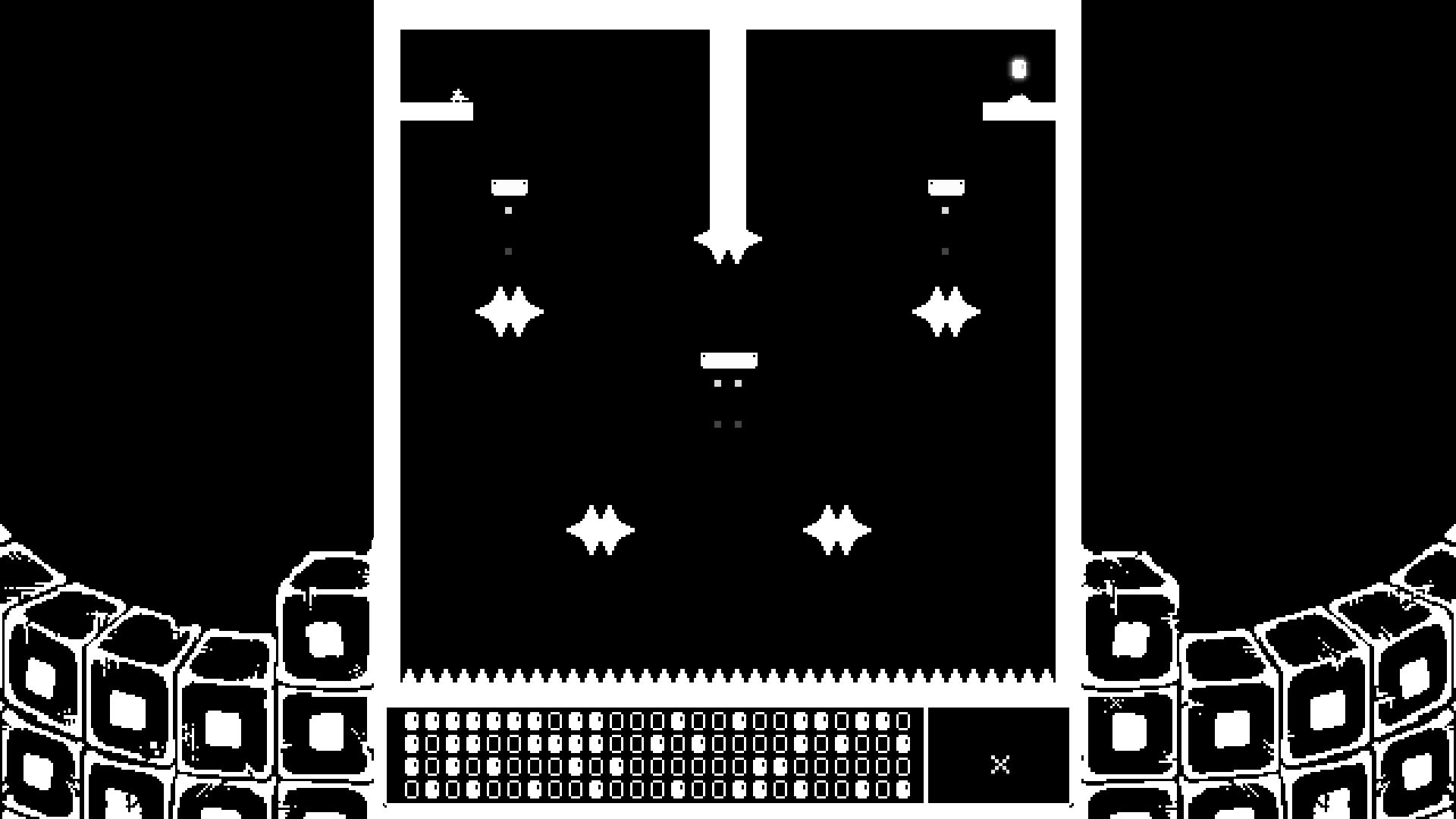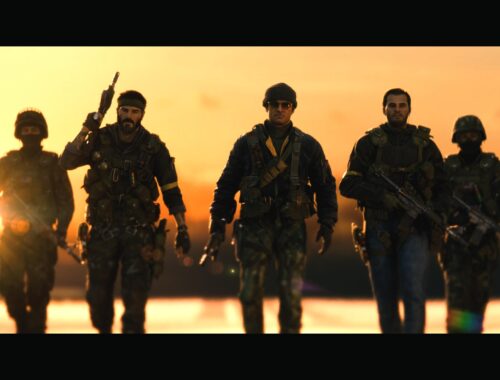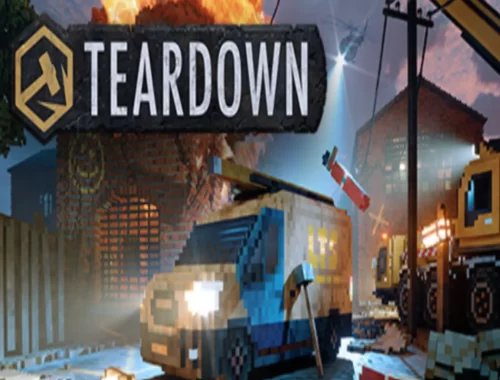D&D: Dark Alliance Xbox Series X Review
Fast Facts
D&D: Dark Alliance
Developer: Tuque Games
Publisher: Wizards of the Coast
Website: https://darkalliance.wizards.com/en
Genre(s): Action, RPG, Hack n’ Slash
Platform: Xbox Series X (Also available on PC and Playstation)
Age Rating: PEGI 16
Release Date: 22/6/2021
Price: £39.99
The fantasy genre is one we’re all familiar with. Whether it be The Lord of The Rings or shows like Netflix’s The Witcher, the genre has found a dedicated spot in modern pop culture. But it’s Dungeons and Dragons that really brought the fantasy genre to the fore, finding favour among the nerdiest of youths and the most famous of Hollywood actors. For a franchise as massive as D&D, you’d think that its adaptations and spinoffs into modern media would hold up pretty well. It’s why I got quite excited about the recently released D&D: Dark Alliance, which seeks to throw players into an epic campaign littered with all the trimmings of D&D’s vast universe. It accomplishes this to some degree, but as a whole, it feels closer to a critical fail than booming success.
Sights to Behold
Dark Alliance feels like it’s trying to simulate or at least mimic a traditional D&D campaign experience. There’s a big prelude that establishes our four main characters, our foes, and the evil object of the quest; a crystal shard eerily similar to the One Ring. The actual game takes place a short while after, as the party of four must go out in search of the crystal shard after it calls upon hordes of various evil beings to reclaim it. The concept sounds fairly interesting, but in practice, it hardly lives up to the high quality of world-building and storytelling associated with its tabletop counterparts.
The campaign seems driven not by a compelling narrative, but the general structure of a D&D campaign. It is very much a linear experience; featuring story chapters and missions with an outlined objective, and varying side objectives and hidden paths to explore. This feels like the game’s attempt at feeling more open-ended, similar to its tabletop inspiration, where you can go off the main path in search of loot or interesting encounters. But while you are free to roam each level, all you’ll really find is an extra bit of loot, a mini-boss, or small puzzle. However, it’s Dark Alliance’s beautiful world design that makes exploration that much more enticing.
The various settings you’ll adventure through culminate into an enchanting interpretation of D&D’s fantasy world; with vibrant frozen wastes, colossal dwarven cities, and dark gothic fortresses. It’s visually stunning and surprisingly magical, especially on the Xbox Series X. My awe for the Dark Alliance campaign ends here though because outside of the pretty views, it is narratively barren.
Dungeon Master Needed
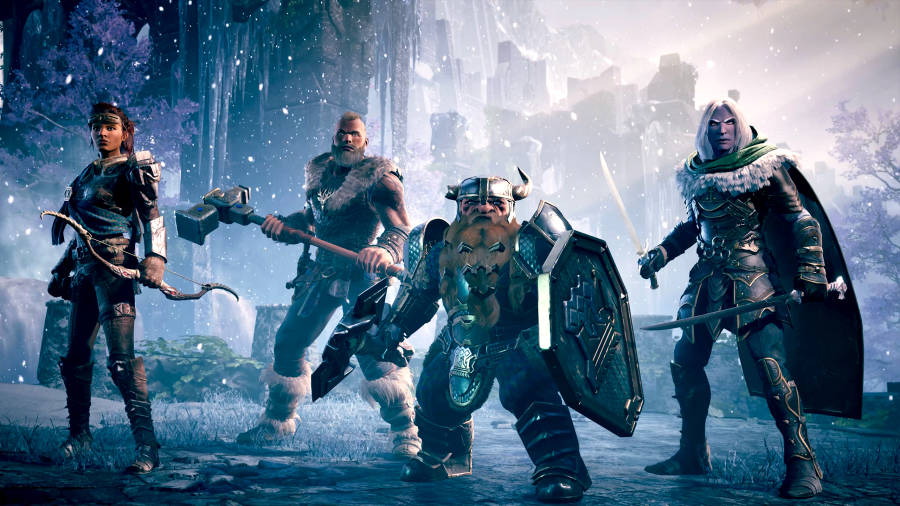
It never feels like there’s actually a story present here. There’s no key narrative twists, intense moments, or interesting developments at all throughout its four main story chapters. All the campaign amounts to is a series of boss fights and hard-hitting brawls lacking in narrative hue; aside from the odd cinematic cutscene. I will admit that it does a great job of bringing familiar monsters and creatures from the world of D&D to life, as you’ll take on a mighty Dragon, a hideous Beholder, and a sinister Lich in your pursuit to kill everything in sight. Even the lesser creatures you’ll face like the grotesque and curiously Irish Verbeeg bring a lot of charm to the campaign. However, it is with its plethora of fantasy foes that Dark Alliance builds upon its many sins.
For whatever reason, Dark Alliance’s extensive roster of foes are given more of the spotlight than the main characters. This is made more criminal by the fact the game’s four characters are actually established D&D heroes. These include Dwarf-King Bruenor Battlehammer; Human archer Catti-Brie; reformed barbarian Wulfgar; and one I believe to be a fan favourite, the Drow duelist Drizzt Do’Urden. Each is well-established within the D&D lore, yet in the game, they feel lifeless; reduced to no more than cool looking figurines begging to be brought to life. They may occasionally exchange a few lines here and there, but they themselves contribute nothing to the overall plot other than their mere existence. It’s an utter shame that these characters with their own rich backstories are neglected so much; however the same could be said for the story at large.
Ironically, it’s the Goblins, Ghouls and Great Dragon that seem to get all the attention. Cutscenes never feature our heroic party, but almost always places our foes front and centre. We see them converse and interact with one another, and even provide some narrative context. This produces a strange dynamic that perfectly characterises Dark Alliance’s narrative failings, as it repeatedly breathes more life and personality into its bosses and smaller minions than it does its central heroes.
Critical Roll (Playing)
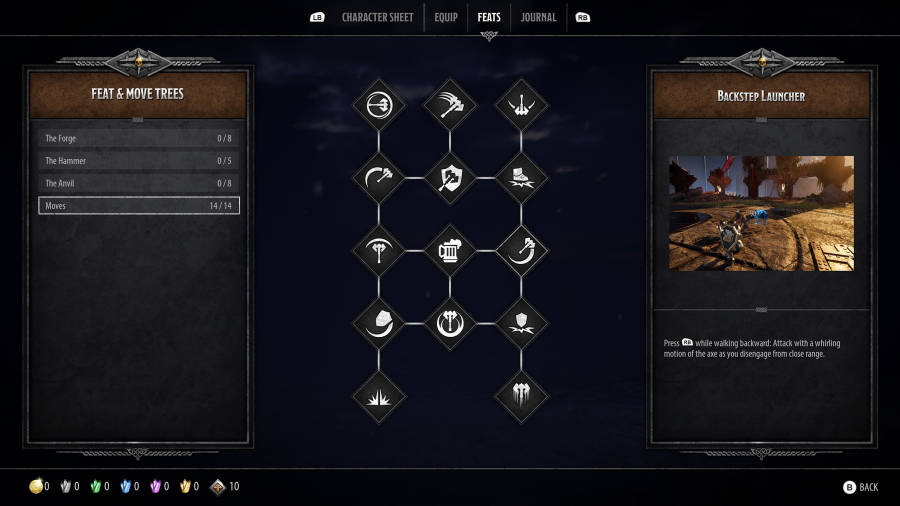
What I will say is that Dark Alliance does a fairly good job everywhere else. As an RPG, it works incredibly well. It features everything you’d expect from an RPG, including a levelling system, unlockable abilities, and upgradeable attributes. What’s even better is that these vary heavily between characters, who genuinely feel distinct from one another.
Each character has their own character sheet with different base stats that reflect their role in the party. Wulfgar, as a heavy hitter, starts out with more strength than Catti-Brie for example; who has a higher dexterity stat in comparison. Each time you level up you gain a point to upgrade whatever attribute you wish, which can grant you increased damage, health, crit chance and more depending on your choice. This gives you a lot of flexibility with regards to how you build your character, at least within the confines of their distinct role. But the flexibility doesn’t end there.
You’ll also receive feat-points that allow you to, funnily enough, unlock feats. These are essentially perks that are orientated around each character’s playstyle, with Bruenor having access to perks that increase his health and armour stats for example. This helps make each character better at performing their core function within a party, which is essential for co-op play on higher difficulties. You’ll also be able to unlock new combos and moves for each character that provide new opportunities to deal greater damage, apply debuffs, and overall feel a hell of a lot more powerful. Unlocking all feats and moves for a character works wonders for diversifying gameplay and your playstyle; ultimately making the game feel that much more enjoyable. It’s not even hard to get to max level, which is both alluring and problematic.
Mighty Treasure
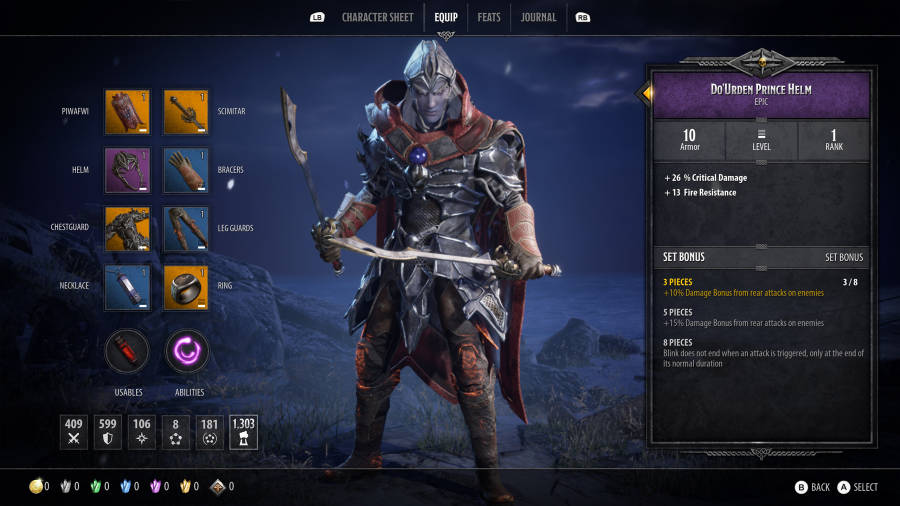
The loot system is very much a core part of the Dark Alliance experience. To anyone familiar with loot-based titles, there’s little deviation in how it functions compared to the many other looters out there. You receive different coloured gear respective of their rarity and quality; you find these pieces of gear in missions; obtaining rarer gear and higher-level pieces net you the best chance of getting better gear, which grants you numerous boons and benefits; and so on and so forth. It’s a familiar loop at this point.
But Dark Alliance treads very lightly with it; not going too extreme with its emphasis on gathering loot, but also not ignoring it to the point where it feels pointless. On that basis alone, it’s somewhere between Destiny and Marvel’s Avengers respectively. Obtaining gear wasn’t too hard, as there are various chests and high-tier foes to be found. But how it all works seems a little…unbalanced.
Finding gear is easy, fair enough, but I soon realised it is because most of the gear you’ll find becomes obsolete very quickly. Even though I had several legendary items, they were all level one. So when I got new, higher-level legendaries, the others became practically useless. What ensues is a vicious cycle of replacing gear to be able to compete at higher difficulties, which in turn, give you better gear to use. This establishes loot as an essential means of progression, however, it falls into the trap of progressing towards nothing. When you have the best gear, there isn’t much to use it for. If you also happen to match with a party of higher level players, the time it’ll take you to max out a character will drop by hours. To put this into perspective, I skyrocketed four levels on one mission (one-fifth of the level cap).
This raised two problems: first, that the level cap is far too low and easy to reach, and second, that the significance of gear level completely circumvents the need for character level entirely, considering you can put on any level of gear regardless of how low level your character actually is. It revealed to me that as much as the levelling and loot systems work, they feel half-baked. Levelling still finds a purpose in how you build your character, but in the end, gear is what makes or breaks your ability to progress. And even at that, you need to progress to get gear to progress. So, yeah.
How Do You Want To Do This?
If there is one thing I can’t take away from Dark Alliance, it is the quality of its combat. Everything about it feels remarkably well done, and built with the goal of fun in mind. The fast-paced hack and slash combat never gets old, as you bash, cleave, and slice through any and all foes in your way. Every hit feels impactful, with excellent sound design and high-quality character animations that effortlessly immerse you in the heat of battle. This is all bolstered by the fact it is easy to pick up and play.
You’ll be able to use light and heavy attacks, blocks, and dodges which can be chained together in devastating combos. Remember how I mentioned unlockable moves? Gaining new moves is crucial for expanding your opportunities in combat, with the ability to combine almost all of these moves in any way you want. As Bruenor, my focus was mainly on taking a lot of damage for the team. But after learning a bunch of new moves I was out for Goblin blood, leaping my way into unsuspecting foes and crushing their guard; Oh, and turning into a dwarven ball of death to cut bosses to smithereens.
Party Time
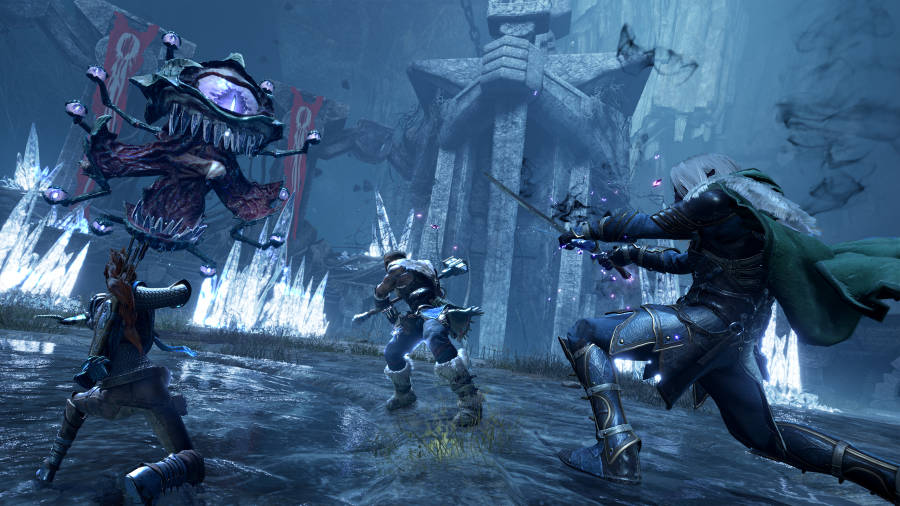
Without question, Dark Alliance is experienced best in co-op. Everyone has a unique skill set that compliments others, which overall makes for an easier, more enjoyable time. Where characters like Drizzt and Wulfgar focus on dealing a ton of damage, Bruenor and Catti-Brie have some interesting support abilities at their disposal. Catti-Brie has an ability that allows her to revive fallen comrades; supposing Wulfgar gets a little too excited and ends up getting clubbed by a Frost Giant. Bruenor has similar life-saving abilities, where he is able to create an empowering circle of protection; taunt enemies to draw them away from injured friends; even drink some ale to heal and strengthen fellow teammates (because we all know that’s how it works). Abilities such as these become invaluable at higher levels where the enemies hit harder, and survival becomes paramount to get the best of loot.
However, I strongly recommend you only play the game in co-op. I was still able to complete missions and fight groups of enemies without any issues in solo. However, things get a little tricky when you have to up the difficulty. At every opportunity, a rogue Goblin or roaming Verbeeg would smack me in the back, side, or front and immediately push me to the brink of death. The way missions are formatted, there is no procedural generation, nor is there any dynamic scaling. This means that you’ll be coming up against the same volume of opponents you would as a full party, which results in some of the most stressful and infuriating experiences you’ll endure this year. So take my advice, just use quickplay.
Summary
In its current state, Dark Alliance fails to live up to its fullest potential. But it is that same untapped potential seeping through the cracks that gives me hope for a bright future. It has some of the most enjoyable combat I’ve experienced this year; which is heightened by multiple layers of progression that is easy to understand and utilise in-game. Even if they feel a little under-developed. Yet it isn’t quite the epic quest it aspires to be. For all of its wonderful source material, it struggles to give players a meaningful and compelling narrative worthy of the D&D franchise. Taking all of this into account, it’s still a pretty enjoyable co-op hack and slash experience that I recommend you at least give a try; and with free content updates on the way, it can only get better from here.
Rapid Reviews Rating

3 out of 5
3
You can purchase D&D: Dark Alliance from the Microsoft Store here.

You can find and read our reviews on OpenCritic.



